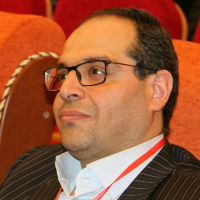Spatial analysis relief and rescue bases in Yazd model in order to achieve maximum efficiency with crisis management approach
Author(s):
Abstract:
In this research, the spatial analysis of the relief and rescue bases of Yazd city and providing the optimal model in order to maximize productivity with the crisis management approach. The research method is applied and in terms of nature and method, is descriptive-analytic. In order to conduct research, spatial and spatial proportionality of emergency rescue and rescue centers of Yazd city was carried out in 12 indicators. The indexes of the five-point Likert spectrum were performed. The relative weight of the indices was obtained from the AHP technique. Then, the layer and composite index were calculated using the Weighted Overlay model. The results of the research showed that none of the rescue and rescue centers of Yazd are in a fully compatible position, and many of the centers are in an indifferent and relatively incompatible position. Medical and educational centers are also suitable places for creating crisis management bases in Yazd and the largest area of the historical area is in the middle position and the smallest area is suitable for the situation. On the other hand, a significant part of the historical fabric of Yazd is destroyed. Accordingly, it can be said that the historical context of Yazd city in the event of an accident does not have the ability to manage the crisis appropriately.
Keywords:
Language:
Persian
Published:
Mapping and Geospatial Information Journal of Guilan, Volume:3 Issue: 1, 2018
Pages:
16 to 24
https://www.magiran.com/p1956137
سامانه نویسندگان
مقالات دیگری از این نویسنده (گان)
-
Forecasting the Demand of Medical Tourists in Yazd Using Artificial Neural Network
Hamidreza Fallah Tafti, Ahmad Esteghlal*, Seyed Ali Al-Modaresi, Zohreh Beheshtipour, Seyed Majid Mirhosseini
Management Strategies in Health System, -
Identifying, categorizing and ranking performance indicators of schools using Q method
Seyed Mahmoud Jalilian, Shahnaz Naibzadeh *, Seyyed Hasan Hataminasab, Seyed Ali Almodaresi
Journal of Management and educational perspective,


